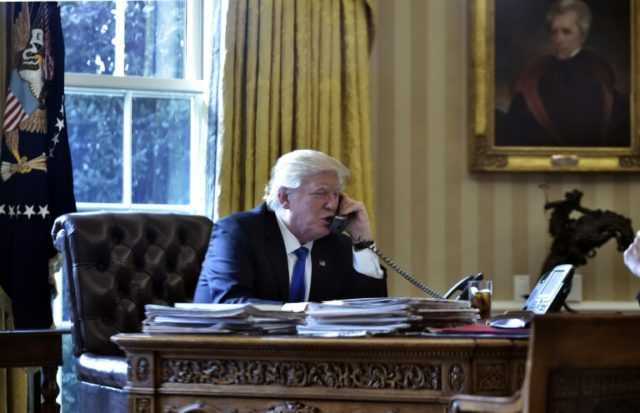|
GreyjoyBastard posted:
I guess that would be ozone.
|
|
|
|

|
| # ? Apr 28, 2024 23:03 |
|
Willie Tomg posted:I feel kinda bad about the gutrumbly feel of that last post so while my knowledge of nuclear capability and game theory is spotty, here's an essay that mostly encapsulates what knowledge I do have on the subject. Get ready to limber up that scrolling finger, boyos This was a good read, though I think the author got a little too excited about rural militias there at the end. It's interesting that there'd be a pretty good chance of survival, even if your city was nuked by a fairly large warhead. Even the radiation wouldn't be that bad if it was an airburst. Really, the article makes it sound like that by far, the worst part of a nuclear exchange would be the fallout wafting east from the ground-burst-nuked Minuteman silos out west. So you'll probably survive the war, and then die a terrible lingering death in the aftermath 
|
|
|
|
the black husserl posted:This is pretty asinine because one of the biggest fears re: climate change is that a drought or flood will spark regional tensions, which will spark war, which will spark global nuclear war. You cannot separate the threat of climate change from the existential threat of nukes. Notice I only spoke about nukes "right now." Also there's the fact that if you want someone else's arable land, glassing it and your own in a nuclear exchange would probably be a bad start. Like yeah what you're talking about could happen for sure. I was trying not to go too far out on the branch though and keep it to what we know.
|
|
|
|
DeusExMachinima posted:Climate change is not by any reasonable projection an existential threat to humanity. It can if left unchecked potentially kill 10+% of the population and radically alter the ecosystem in numerous ways, but not literally destroy humanity. As for the nukes since we've got Trump and Putin currently slamming their dicks together and China being our major trading partner I think we're fine at least for now.
|
|
|
|
GreyjoyBastard posted:
My bad, its of course hydrogen peroxide. ---------- In regards to climate change, the mass immigration/refugee waves alone combined with the resulting economic sequences from rising sea levels, desertification etc would be enough to spark regional wars or to at least destabilize the world in a major sense. This is not sci-fi btw, neither is it something that will trigger in 200 years from now or happen very gradually. We are getting slightly off-topic though. Dante80 fucked around with this message at 05:55 on Jan 28, 2017 |
|
|
|
Most of what I am going to say has been implied or mentioned, but I want to revisit the financial side of the arms race, as someone who lived through half the Cold War and followed it intensively. The Reagan administration easily outspent the USSR with incremental advances in tech, which were just enough not to justify open warfare, but enough to justify Russians scrambling to match almost every policy, spending and military advancement (MIRVs, cruise missiles, ABM defence, stealth fighters, quieter and quieter SSBMs, stealth bombers, extra-long range stealth bombers, and finally SDI) - which, of course, benefitted the military industrial complex to the tune of massive deficits, which is no rich person's problem. Since then, messy, protracted wars have slaked the cash-lust of the MIC but resulted in wavering public opinion and regime changes...however nothing would do better than another arms race or a complete if pointless revamp of the American nuclear weapons delivery system if Trump and the Republicans can present it as A Good Thing For America, regardless of closer Russian ties. China, Iran, who knows, anyone with a current arsenal can become the straw man justification if it's on Fox. Nuclear war is stupid and would never benefit anyone in the long run. Naturally the likelihood of limited nuclear exchange or a first-strike or a decapitation strike (North Korea) are higher under an unpredictable demagogue, but full-fledged nuclear exchange is an end to the status quo (top one percentile). I would not however rule out a protracted and clumsily justified sea, air and cyber war with China, culminating in the invasion and subsequent liberation of Taiwan. This would be a convenient bolus for two stale supereconomies and allow them to flex some tech.
|
|
|
|
Regarding a revamp of the USA nuclear arsenal. Right now, the US strategic nuclear force consists of 3 major elements. 1. 431 LGM-30G ICBMs with W78 or W87 warheads. Those missiles are old, but have been thoroughly upgraded over the last five decades. By 2018, USA has to bring the number of active missiles down to 400 (with another 50 in reserve). 2. 230 UGM-133A SLBMs with W76 or W88 warheads. By far the most capable elements of the nuclear triad, those missiles are projected to be in service until the early 2040s at the earliest. They have exceptional MIRV capabilities and are poised to also arm the Columbia-class SSBNs that will start replacing the Ohio-class in a couple of decades. 3. 78 strategic bombers, including 58 aged but still capable B-52Hs. The global strike command currently can carry three different nuclear weapons. The B61 and B83 free-fall thermonuclear bombs, and the aged AGM-86 ALCM carrying the W80 nuclear warhead. Here are the programs currently running or under consideration. 1. The Ground Based Strategic Deterrent (GBSD) program is set to replace the 60s vintage ICBMs in USAs inventory. Those Minuteman-class missiles have been the sole element of the land part of the triad since 2005 when all 114 LGM-118 Peacekeeper missiles were removed from service due to START II (and more importantly, low reliability and high maintenance problems). GBSD has just started, and we are expecting the program to be able to start replacing Minuteman III missiles in the very late 2020s. The projected cost is very difficult to ascertain at this point in time, it is possible though to balloon to more than $100Bn (including development costs). 2. The Columbia-class/SSBN-X program is set to replace the 14 Ohio-class SSBN fleet, starting from the early 30's. The first Ohio class submarine has to be decommissioned around the 2027-2029 time frame, and the schedules are rather tight after that for the rest of the fleet (about 1 ship each year). So, by the early thirties US has to provide a reliable replacement to keep the SSBN force at the current levels. The plan right now is for a total force of 12 SSBNs instead of 14. Also, each Columbia class SSBN carries 8 less missiles than the Ohio class (16 vs 24). So the projected ceiling for the second part of the triad is projected to be around 192 D5 missiles by the early 40s. The projected cost for the program is about $80Bn (including development costs). There is no current plan to replace the Trident II SLBM, which can stay in service without additional maintenance programs until roughly 2042. 3. The Northrop Grumman B-21 "Raider" under the LRS-B program is going to be the next nuclear weapon carrying strategic heavy bomber in US service. Initial operating capability is expected around 2030, although that is considered slightly optimistic. This is a pretty major program, with an expected cost of at least $80Bn for 100 aircraft (including development costs). Interestingly enough, in July 2016 the U.S. Air Force stated they would not release the estimated cost for the B-21 contract with Northrop Grumman. The Air Force argued releasing the cost would reveal too much information about the classified project to potential adversaries (lol). The Senate Armed Services Committee also voted to not publicly release the program's cost, restricting the information to congressional defense committees over the objections of a bipartisan group of legislators. 4. The Long Range Stand-Off (LRSO) cruise missile program is set to replace the around 530 aging AGM-86 ALCMs. After the removal from service of the newer but plagued with reliability and maintenance problems AGM-129 ACMs in 2012, most of the 30 year old AGM-86s were given a lease of life until the early 30s, via a SLEP program. This put considerable pressure on the LRSO program, since developing and producing the new cruise missiles would be very expensive, there were other similar weapons that could fill the role (like the AGM-158 JASSM-ER) and there were a lot of bigger priorities ahead of it. After a vote in last June though, the program is back on track. Which still does not make much sense for many people..in any case, the projected cost of the program is around $25Bn for 1000 missiles. ----------- If someone had to chose from the above, I think the most "pressing" program is GBSD. It is the only viable way for US to maintain the Triad. On the other hand, you could do a couple of things, partly taking a lesson from China and Russia. You could shelve silo-based ICBMs for a competent mobile road TEL ICBM like RS-24 Yars or DF-41. Silo based missiles are prime Counterforce target candidates, that in this day and age mostly work as pork incentives for local politicians. Also, you could choose to scrap the land part of the triad all-together, and address force size via more SSBNs. Modern SLBMs have the same range and ICBMs, and almost the same accuracy. Thoughts? Dante80 fucked around with this message at 08:08 on Jan 28, 2017 |
|
|
|
Dante80 posted:Regarding a revamp of the USA nuclear arsenal. In all likelihood, it seems more modern SSBN with a possible update to the GBSD seems to be the most prudent course. I don't think the US is well suited for TEL ICBM, one thing is you need a very strict control over the flow of information to make them viable. The US has the naval and technological advantage to make SSBN's completely viable and GBSD back be a useful backup. I am not a big fan of another stealth bomber program and honestly it seems like a boondoogle especially since we may have to be working with contested airspaces.
|
|
|
|
Ardennes posted:I don't think the US is well suited for TEL ICBM, one thing is you need a very strict control over the flow of information to make them viable. Not really. To be more precise, I find it far more difficult for a country to have a secure strategic air arm as well as a tactical nuclear force - like US had in the past, than a secure mobile (rail or road) ICBM network. I do agree that going ahead with a good SSBN element is the most pressing priority. Those Ohios cannot get a SLEP without a very heavy and expensive modernization program (which also involves re-fueling).
|
|
|
|
Dante80 posted:Not really. To be more precise, I find it far more difficult for a country to have a secure strategic air arm as well as a tactical nuclear force - like US had in the past, than a secure mobile (rail or road) ICBM network. I am talking more about keeping track of launchers, which ultimately is going to be more difficult in a country that still has freedom of the speech/press (well..for a while) were you can post all the Instagram photos you want. There are ways to get around this but I think Russia/China have had advantage here (although Russia did have a problem in Donetsk, I think they have largely controlled the issue). At a certain point it seems more feasible to simply have better/more modern SSBNs. A strategic air arm at this point seems like an inefficient use of resources.
|
|
|
|
Ardennes posted:I am talking more about keeping track of launchers, which ultimately is going to be more difficult in a country that still has freedom of the speech/press (well..for a while) were you can post all the Instagram photos you want. There are ways to get around this but I think Russia/China have had advantage here (although Russia did have a problem in Donetsk, I think they have largely controlled the issue). Again, that is not really a big issue man. See where (and how) GLCM and Pershing II were fielded in Europe. And yes, there were telephones back then too, as well as freedom of speech/press. Also, its not like a good portion of USA is not restricted to civilians already. Case in point:  I think that the main reason that DoD is not going for something like this is simply due to the pressure from Dakota/Wyoming/Montana politicians. There is a LOT of pork involved in keeping the silos running imo. Ardennes posted:At a certain point it seems more feasible to simply have better/more modern SSBNs. A strategic air arm at this point seems like an inefficient use of resources. Agreed on both. Having said that, B-21 is a global reach penetration bomber that can be used in a conventional war rather well, coupled with smart weapons. No idea on what its capability would be against a competent AA force with L-band EW elements though. Dante80 fucked around with this message at 12:16 on Feb 5, 2017 |
|
|
|
If this were to happen, to what extent would Europe be a target? Or Japan? I would assume American military bases in Europe would at least get nuked, would European cities be destroyed, or would they be left for conventional conquest by the Russian army or something? Would the countryside be affected, or could I just go into the basement for a few weeks or something?
|
|
|
|
If this were to happen, counter-force targets would be hit first by the initiator, with counter-value warfare mostly reserved for a second strike. In any case, it would not matter much what you did. The world would be hosed and we would at last have a pretty convincing answer to the Fermi Paradox.
|
|
|
|
Dante80 posted:If this were to happen, counter-force targets would be hit first by the initiator, with counter-value warfare mostly reserved for a second strike. I guess what I'm mostly wondering about is the actual extent of the fallout, assuming the entire nuclear arsenals of the US and Russia were to be detonated in mostly airbursts, would the fallout be at all survivable in some places? Sure it would gently caress everything up, knock out electrical grids with the EMP, coat the land in fallout, trigger refugee floods and massively raise the risk of cancer, but would it be actual extinction? People have survived in the Chernobyl exclusion zone for years too, after all. Unless you are directly hit by a warhead (fairly unlikely unless you live in a big city or near a target), isn't there something you can do so you can go on living in whatever is left after the exchange? Or are you really serious that it would be total extinction? What if you live in the southern hemisphere far removed from any of the superpowers, say in Mauritius or New Zealand or Patagonia or something? What about animal and plant life? A lot of fictional accounts of a nuclear exchange are written from the perspective of an American or British city dweller who have the most to fear, the rest of the world is usually not mentioned in fiction (I'm thinking of Threads or the Fallout games and stuff).
|
|
|
|
Here is the abstract of a 2014 study on the matter, that uses current, precise weather models and also takes into account nuclear warhead miniaturization. Multidecadal global cooling and unprecedented ozone loss following a regional nuclear conflict quote:We present the first study of the global impacts of a regional nuclear war with an Earth system model including atmospheric chemistry, ocean dynamics, and interactive sea ice and land components. A limited, regional nuclear war between India and Pakistan in which each side detonates 50 15 kt weapons could produce about 5 Tg of black carbon (BC). This would self-loft to the stratosphere, where it would spread globally, producing a sudden drop in surface temperatures and intense heating of the stratosphere. Using the Community Earth System Model with the Whole Atmosphere Community Climate Model, we calculate an e-folding time of 8.7 years for stratospheric BC compared to 4–6.5 years for previous studies. Our calculations show that global ozone losses of 20%–50% over populated areas, levels unprecedented in human history, would accompany the coldest average surface temperatures in the last 1000 years. We calculate summer enhancements in UV indices of 30%–80% over midlatitudes, suggesting widespread damage to human health, agriculture, and terrestrial and aquatic ecosystems. Killing frosts would reduce growing seasons by 10–40 days per year for 5 years. Surface temperatures would be reduced for more than 25 years due to thermal inertia and albedo effects in the ocean and expanded sea ice. The combined cooling and enhanced UV would put significant pressures on global food supplies and could trigger a global nuclear famine. Knowledge of the impacts of 100 small nuclear weapons should motivate the elimination of more than 17,000 nuclear weapons that exist today. Its not good. Far better than ye olde Nuclear Winter scenarios (based on earlier climate models and very large, imprecise warheads hitting counter-value targets), but still not good at all. Moreover, have in mind that radiation knows no borders. Open a map of Ukraine/Belarus, and see what Chernobyl did to both due to the wind/rain. Quick example. https://www.youtube.com/watch?v=MU4_bJT8W3Y Dante80 fucked around with this message at 13:21 on Feb 5, 2017 |
|
|
|
Dante80 posted:Here is the abstract of a 2014 study on the matter, that uses current, precise weather models and also takes into account nuclear warhead miniaturization. Dante80 posted:Moreover, have in mind that radiation knows no borders. Open a map of Ukraine/Belarus, and see what Chernobyl did to both due to the wind/rain.
|
|
|
|
Shibawanko posted:I guess what I'm mostly wondering about is the actual extent of the fallout, assuming the entire nuclear arsenals of the US and Russia were to be detonated in mostly airbursts, would the fallout be at all survivable in some places? Honestly, no one really knows. There's a wide range of guesses, but that's all. There's precedent for material from isolated events going global (such as the Year Without A Summer, caused by a volcanic eruption and noted for altering the appearance of sunsets worldwide), but when you get into asking about the severity of the nuclear winter and the lethality of the fallout, its not like we've got tons of real-life data recorded about what happens in a real all-out nuclear war. All the research is based on simulations, and there are a fair amount of assumptions in those simulations because no one's ever dropped twenty nukes on a major city just to see what happens to the air currents or how the fires behave.
|
|
|
|
Donald Trump's main concern is who is hosting this week's SNL. There would be no SNL after a nuclear war. QED.
|
|
|
|
Shibawanko posted:If this were to happen, to what extent would Europe be a target? Or Japan? I would assume American military bases in Europe would at least get nuked, would European cities be destroyed, or would they be left for conventional conquest by the Russian army or something? Would the countryside be affected, or could I just go into the basement for a few weeks or something? Depends on what the current strategy is. For exemple during cold war the French wanted all Poland to be obliterated so that soviet forces could not advance. Soviets on the other hand were looking to target most capitals. And americans were for preventive strikes directly on all control centers/silos. I do not even know right now what would be the high value targets aside of military bases and nato hq
|
|
|
|
welp Report: Trump Denounces Nuclear Arms Control Treaty to Putin http://www.breitbart.com/national-security/2017/02/11/report-trump-putin-call/  President Donald Trump in his first phone call with Russian President Vladimir Putin denounced a treaty that caps U.S. and Russian deployment of nuclear warheads, according to a report. Trump told Putin that the treaty, known as New START, was one of several bad deals negotiated by the Obama administration, according to a report by Reuters. Unnamed sources said that Trump did not know what the treaty was, and had paused to ask his aides in an aside what it was, according to the report. White House Press Secretary Sean Spicer told reporters on Thursday that Trump understood the topic, but had wanted an opinion from an aide. “It wasn’t like he didn’t know what was being said. He wanted an opinion on something,” Spicer said. The treaty requires Russia and the United States to lower the number of deployed strategic nuclear warheads to 1,550 or less by 2018. It also limits deployed land- and submarine-based missiles, and nuclear-capable bombers. In the phone call, Putin suggested extending New START, which is set to expire in 2021, the sources told Reuters. Trump had criticized the treaty during a 2016 presidential debate, saying Russia had “outsmarted” the U.S. with former Secretary of State Hillary Clinton. Critics view the agreement as one-sided, requiring deep cuts in the U.S. nuclear arsenal and abandoning missile defense in Europe. Trump had also tweeted, as president-elect, “The United States must greatly strengthen and expand its nuclear capability until such time as the world comes to its senses regarding nukes.” Supporters of the treaty argue that the end of the treaty could lead to a new arms race. “New START has unquestionably made our country safer, an opinion widely shared by national security experts on both sides of the aisle,” Democratic Sen. Jeanne Shaheen (NH) said in a statement. A mutual agreement can extend the treaty’s provisions for another five years. The original agreement, known as START, was renewed in 2010 by then-President Obama, and went into effect in 2011, according to CNN. It aims to cut the number of nuclear weapons that the U.S. and Russia could deploy by about one-third. It would limit a maximum of 700 deployed intercontinental ballistic missiles, submarines and bombers, and a total of 1,500 warheads.
|
|
|
|
Dante80 posted:welp I want a yoooge nucular arsenal. Tremendous nukes that explode bigly, like you've never seen before. Make MAD great again.
|
|
|
|
Lol this is the guy Putin picked
|
|
|
|
Personally I'm all for nuclear war. Bring it on.
|
|
|
|
North Korea, best Korea. https://www.youtube.com/watch?v=-uJ5i1r2Xu0 btw...this looks like a solid fueled rocket. O_O Dante80 fucked around with this message at 21:35 on Feb 13, 2017 |
|
|
|
Dante80 posted:Here is the abstract of a 2014 study on the matter, that uses current, precise weather models and also takes into account nuclear warhead miniaturization. How is this possible? Collectively, we have tested over 500 nuclear weapons above ground for a total of 545 MT. In 1962, there were something like 140 nuclear tests in total. We are still alive. How is it that 100x 15 kT weapons would cause so much destruction? e: added wikipedia link with the nuclear test graph mitztronic fucked around with this message at 23:58 on Feb 13, 2017 |
|
|
|
Dante80 posted:welp Going back to the original Reuters article, the sourcing on this story seems kind of dubious - it comes from "two U.S. officials and one former U.S. official", two of whom heard it from other people who had read the notes of the call and one of whom heard it from other people.
|
|
|
|
mitztronic posted:How is this possible? Collectively, we have tested over 500 nuclear weapons above ground for a total of 545 MT. In 1962, there were something like 140 nuclear tests in total. We are still alive. How is it that 100x 15 kT weapons would cause so much destruction? This study takes into account the effect of actually using those weapons on cities and such. The vast majority of the effect would be from the cities themselves burning. But even with that it seems a bit overblown given we burnt Japan to the ground and didn't end the world.
|
|
|
|

|
| # ? Apr 28, 2024 23:03 |
|
Has the risk of war risen since Trump took the oath of office? Will it plan to rise when 'warm' relations between Trump and Putin dry up? How does Russgate tie into this? What is Mathis' take?
|
|
|





 This poster loves police brutality, but only when its against minorities!
This poster loves police brutality, but only when its against minorities!














